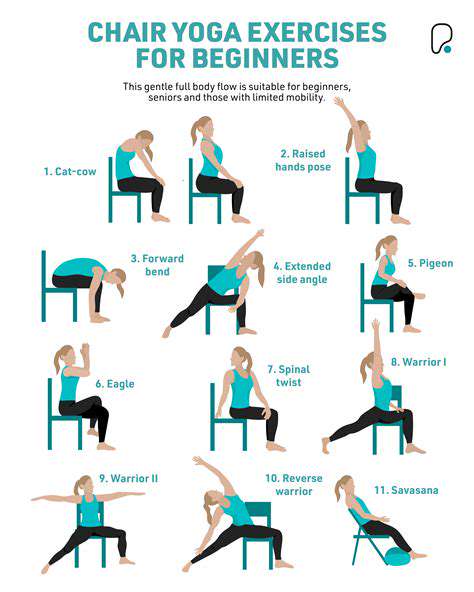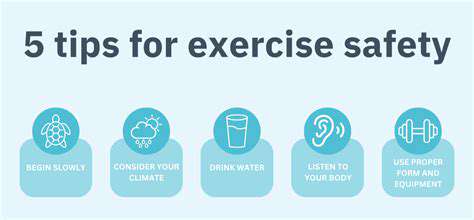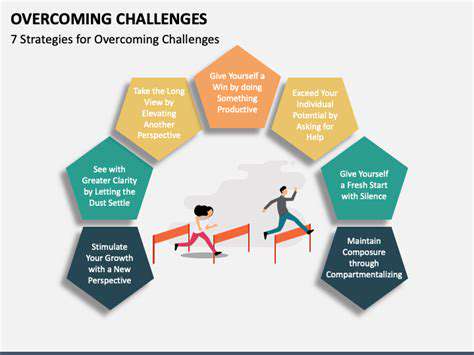Low Impact Strength Training for Seniors with Osteoporosis
Building a Safe and Effective Routine: Gradual Progression and Proper Form
Gradual Progression: The Foundation of Injury Prevention
Building a safe and effective routine hinges on gradual progression. Rushing into intense workouts or lifting heavy weights without proper preparation significantly increases the risk of injury. Start with lighter weights, fewer repetitions, and shorter durations, gradually increasing the intensity and duration over time as your body adapts and strength improves. This allows your muscles, tendons, and ligaments to adjust to the new demands, reducing the risk of strains, tears, and other common workout injuries.
Listen to your body. If you experience pain, stop the exercise immediately. Pain is a crucial signal that something is wrong, and ignoring it can lead to long-term problems. Rest and recovery are just as important as the workout itself. Gradual progression ensures that your body has sufficient time to recover and rebuild, promoting long-term progress and reducing the likelihood of burnout.
Proper Form: The Key to Effectiveness and Safety
Proper form is paramount for maximizing the effectiveness of your workouts and minimizing the risk of injury. Focusing on maintaining correct posture and technique throughout each exercise is crucial. This not only targets the intended muscles but also protects your joints from unnecessary stress. Incorrect form can lead to imbalances, putting undue strain on specific areas of your body and increasing the likelihood of injuries.
Seek guidance from qualified professionals, such as personal trainers or physical therapists. They can provide personalized instruction and feedback on your form, ensuring you're performing exercises correctly. Learning proper form from the start will save you from potential injuries in the long run and maximize the benefits of your workouts.
Warm-up: Preparing Your Body for Exercise
A thorough warm-up is essential to prepare your body for the physical demands of your workout. It gradually increases blood flow to your muscles, raising their temperature and increasing flexibility. This process helps reduce the risk of muscle strains and tears during exercise.
Dynamic stretching, such as arm circles, leg swings, and torso twists, is a great way to warm up. These movements actively prepare your muscles for the workout, improving range of motion and reducing the risk of injury.
Cool-down: Allowing Your Body to Recover
Just as important as a warm-up is a cool-down. A cool-down gradually lowers your heart rate and allows your body to return to a resting state. This process helps prevent blood pooling in the muscles and promotes recovery. Static stretching, such as holding a hamstring stretch, is a suitable cool-down method. This helps maintain flexibility and reduces muscle soreness after exercise.
Nutrition and Hydration: Fueling Your Body for Optimal Performance
Proper nutrition and hydration are fundamental to supporting your workouts and promoting overall well-being. Consuming a balanced diet rich in fruits, vegetables, lean proteins, and complex carbohydrates provides your body with the essential nutrients needed for energy production and muscle repair. Staying adequately hydrated is just as crucial, as water is essential for numerous bodily functions, including regulating temperature and transporting nutrients.
Rest and Recovery: Allowing Your Body to Rebuild
Rest and recovery are often overlooked but are vital components of a safe and effective workout routine. Allowing your body sufficient time to rest and recover between workouts allows your muscles to repair and rebuild, leading to improved strength and endurance over time. Adequate sleep is crucial for this recovery process, as it allows your body to repair tissues and replenish energy stores.
Monitoring Progress and Adjusting Your Routine: Staying Motivated and Safe
Regularly monitoring your progress is essential to ensure you're on track and making consistent improvements. Tracking your workouts, noting any changes in your body, and adjusting your routine as needed are vital for continued success and injury prevention. As you get stronger, gradually increase the intensity or duration of your workouts to continue challenging your body and promoting growth. If you experience any persistent pain or discomfort, consult a healthcare professional for guidance and adjustments to your routine.











